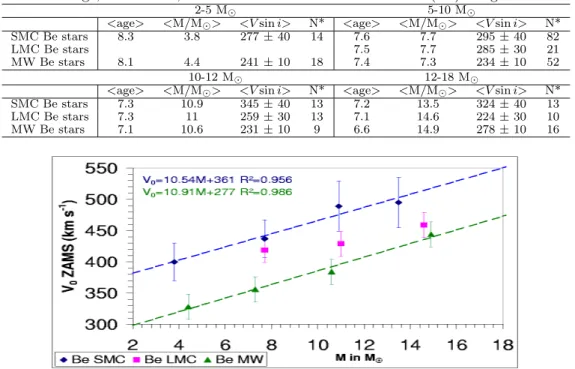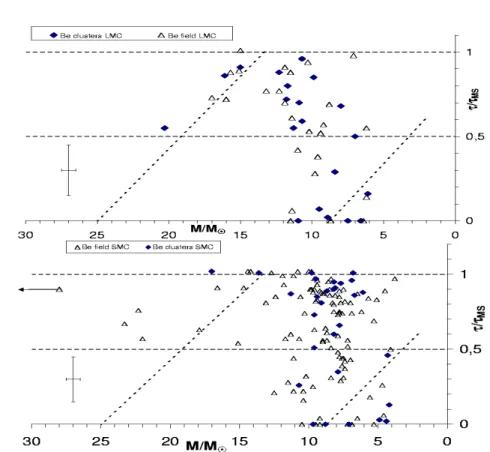Effects of metallicity, star formation conditions and evolution of B & Be stars.
Texte intégral
Figure




Documents relatifs
Module 1 page 7 www.partagesdemaitresses.wordpress.com avec la mise en page de http://maisquefaitlamaitresse.com/rseeg -ce1/ Page 8 1 En utilisant des mots dans
56 , 60 , and 61 , we recover the well-known exact solution of the free convection boundary value problem for the permeable surface when the wall temperature and the
[r]
Ratio of the EW of He i 7065 to He ii 5412 as a function of spectral type for the low-metallicity models calculated in the present study, the solar metallicity models of Martins
With this calibration, and using an aperture photometry of 1" diameter (similar to the seeing of the observations of Yagi et al. For the rest of the sources with no
To derive the respective ZAMS true equatorial velocities we have taken into account four main phenomena determining the variation of the surface rotation with age (Meynet &
We conclude that this star is a carbon-enhanced metal-poor star enriched in elements produced by s-process (CEMP-s), whose enhancement in heavy elements is due to mass transfer from
Note: “Closing” is defined as a positive closure rate horizontally and a positive relative